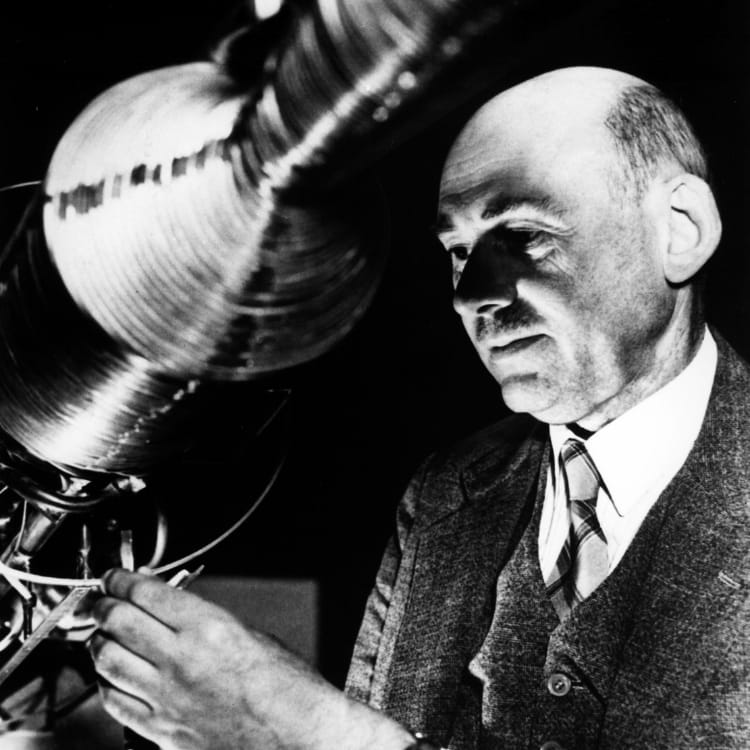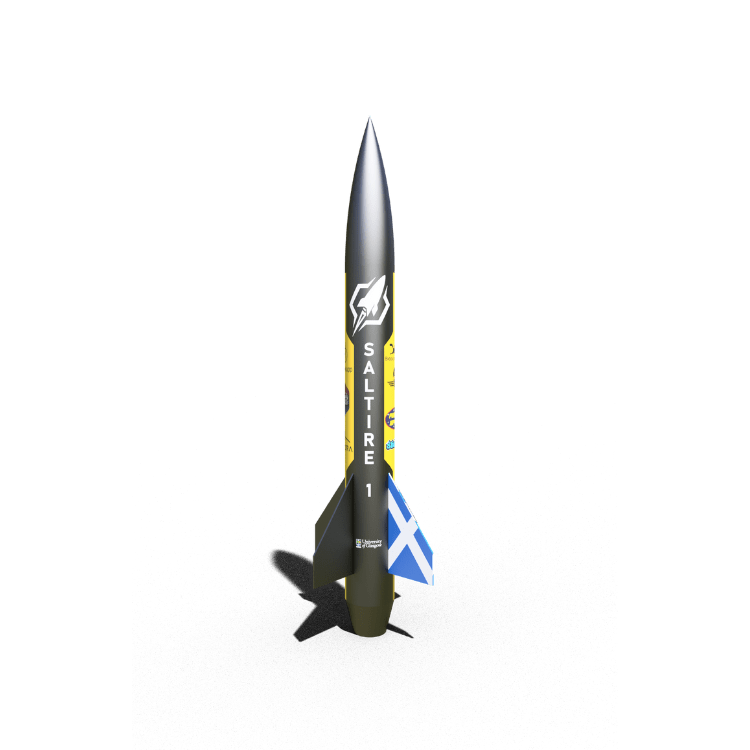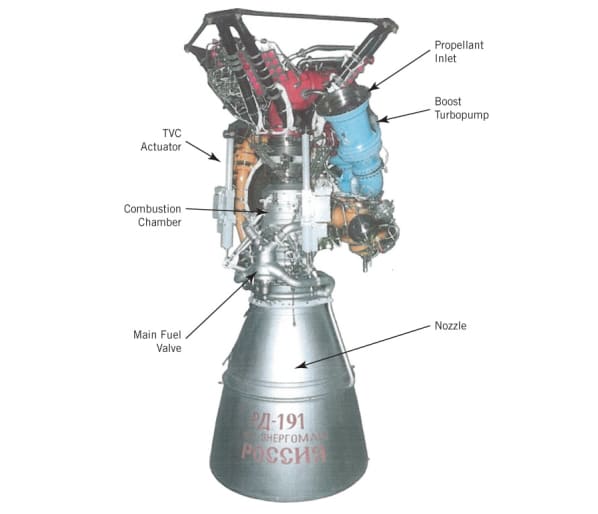Rocket Propulsion - Sutton Program Article 4
Follow articleHow do you feel about this article? Help us to provide better content for you.
Thank you! Your feedback has been received.
There was a problem submitting your feedback, please try again later.
What do you think of this article?
This article will accompany the fourth video in our series made possible by RS Components Grass Roots aiming to introduce key rocketry concepts and principles. This article will be looking at different types of rocket propulsion, the fundamentals behind how thrust is created and a brief look at some modern-day propulsion systems. Written by Sean Clark and Kieran Webb
“The word propulsion comes from the Latin ‘propulsus’, meaning ‘to drive away’. Rocket propulsion is a class of propulsion that produces thrust by ejecting matter, called the working fluid or propellant, stored entirely within the flying vehicle.”
-Rocket Propulsion Elements by George P. Sutton
Introduction
It was first hypothesised in a paper ‘A Method for Reaching Extreme Altitudes’ by Dr. Robert Goddard that it would be possible to send a rocket into space by burning a high energy gunpowder in an enclosed chamber and then accelerating the hot gases produced to very high velocities by using a special nozzle called a converging-diverging nozzle.
At the time, Goddard’s theories seemed revolutionary, so much so that media outlets in his native U.S.A mocked him for his ideas. It was perceived to be common sense for engines to only be able to produce thrust when it has an atmosphere to push against and, in the vacuum of space, this seemed impossible.
However, we have learned previously that the exhaust gases do not ‘push’ on the atmosphere. Instead, Newton’s laws and the conservation of momentum allow the rocket to produce effective thrust, even in an environment with no air. To apply this principle, rockets throw their mass ‘overboard’ by expelling particles from a nozzle at the bottom of the rocket and, with our two principles, we know the momentum must be conserved and therefore there is also a momentum in the opposite direction.
There are many factors that dictate the efficiency of the rocket. We will focus on the Isp, or specific impulse- a term we have introduced previously. As a reminder, this term essentially shows the change in force provided to a rocket body per unit mass of fuel expelled from it. Before we compare these propulsion types, we can prove that Goddard had the correct idea.
Beating the vacuum of space (with physics!)
Below is a simple example of how the conservation of momentum applies in the vacuum of space, using the mass values of a modern rocket.
In space, we will assume gravity is zero. If we look at a rocket of similar size to SpaceX’s Falcon 9; mass is approximately 550,000kg with a propellant mass between two stages equalling approximately 490,000kg. We can say that the 60,000kg left is equal to our ‘empty’ rocket structure. In this case, we are ignoring a payload mass and are assuming 100% fuel efficiency. With this, our variables are:
g = 0
mrocket = 550,000kg
mpropellant = 490,000kg
mstructure =60,000kg
Now we can write the rocket’s momentum – making sure to keep the masses separate – so we have the rocket’s structural mass plus the rocket’s propellant mass.
ppropellant + pstructure = procket
Initially, the rocket is at rest, so its velocity is zero and therefore the total momentum is also zero. To initiate launch we expel 50,000kg of propellant through the rocket nozzle at approximately 200ms-1. The momentum of this propellant then becomes:
ppropellant = mpropellant*vpropellant
ppropellant = 50,000 * 200
= 10*106 kg ms-1
In order to comply with the conservation of momentum, there must be an equal magnitude of momentum acting in the opposite direction to maintain the principle. To solve this, we set the momentum of the propellant and the momentum of the structure of the rocket equal to each other and can then solve for the velocity of the rocket.
pstructure = ppropellant
500,000 * vrocket = 10x106
vrocket = 20 ms-1
We have two options to alter the velocity of a rocket- either change the amount of mass that is expelled from the nozzle per second or change the rate at which that mass is expelled. All rocket propulsion systems abide by these two very simple principles. It was using these principles that Goddard proved it would be possible to build a rocket capable of space flight, the only thing left was figuring out how to expel the propellant at a high enough velocity.
The Ideal Gas Law & its application to rockets
This equation is also known as the equation of state- it is called so because the balance of each of the variables in the equation will determine the state of the gas. The relationship between each of these variables are given by the equation:
P*V = n*R*T
Where the variables are:
- P: the pressure on the system
- V: the volume of the system
- n: the number of moles in the system (or another way to express the mass of the gas)
- R: the Reynolds number, a value which describes different flow types
- T: the temperature of the system
If the temperature of our propellant is increased, then the pressure will also increase. This equation is important in rocket propulsion. If we keep the other variables in the equation constant, we can then analyse the relationship between pressure and temperature:
P * constant = T * constant
As these two variables are directly proportional to each other, we can see that if the temperature of our propellant is increased, then the pressure will also increase. The reason this equation is so important is that we must increase the pressure in order to produce a high exhaust velocity, which we can do by heating the propellant.
Constantly applying heat allows the exhaust gases to be pressurized as they are being expelled from the rocket, which is extremely useful for high propellant masses and long burn times. For shorter, more controlled bursts of thrust we can use cold gas thrusters, in which the propellant is pressurized and no heat is applied. Cold gas thrusters are excellent for when propulsion is required on a smaller scale, such as a spacewalk, as they are cheap, simple and do not need any combustion.
There are two main methods of increasing propellant temperature: directly heating the propellant, or through producing chemical reactions- this is known as chemical propulsion, and it exists in various forms. First, there is another factor we must consider in order to increase exhaust velocity.
The importance of nozzle design
Now that the temperature has been increased and hence pressure also, there is another way to further increase exhaust velocity. This is done by varying the nozzle geometry. By constricting the flow at exit, the velocity can be increased. This can be displayed at home with a hose or tap by putting a finger over the exit, the water will shoot out at a greater velocity. The same principles apply to a rocket nozzle.
There is a limit to this as the nozzle cannot be made infinitely small (once the flow has become supersonic), at this point a different kind of nozzle is needed to accelerate the flow any further. This is a converging-diverging nozzle (shown above) and is the reason for the ‘bell’ shape seen in rocket nozzles. This will be covered in more detail in a later article discussing supersonic flow.
Chemical Propulsion Fundamentals
The main forms of chemical propulsion are solid, liquid and hybrid, where they are separated by the physical state of their stored propellant. A major correlation between these different forms of chemical propulsion is that they all combine a fuel with an oxidiser (a substance that supports the combustion of fuel) and combusted. When the fuel is combined with the oxidiser (and sometimes some heat) it leads to combustion.
An easy way to visualise the role the oxidiser plays in this process is through a bonfire- the bonfire requires oxygen to be present in order to burn. If we increase the amount of oxygen supplied to the bonfire, it will burn through its fuel at a faster rate- the same idea applies to rocket fuel.
The combustion of the fuel and the oxidizer produce very hot gases, usually between 2500oC and 4100oC. These gases will then expand within the rocket’s thrust chamber and be accelerated to high velocities within the nozzle, finally being exhausted to produce thrust. The actual combustion process itself is relatively simple with the most important part being the oxidiser – some kind of molecule of oxygen.
This varies as pure oxygen and hydrogen peroxide are used. Oxygen is used due to its high reactivity making it very good at breaking chemical bonds; this is what causes the release of energy in these reactions.
Breaking down each type
I : Solid-Propellant Motors
In this type of motor, the fuel and oxidiser are mixed together into a solid mass known as a grain. The grain is directly fused onto the rocket’s casing and is designed to burn steadily after it is ignited. The burn can be controlled by adding small holes or ‘perforations’ along the grain. This is the simplest form of propulsion system and requires the fewest parts- it does not require any additional ‘plumbing’ to direct the fuel to the nozzle. However, there is a lack of control post-launch for this type of system- once the grain ignites, it is difficult to stop the burn (without breaking the casing) and therefore the rocket’s flight is not as easily controlled as other types. GU Rocketry's debut launcher, Saltire-1, is an example of a solid propellant rocket.
Advantages and Disadvantages:
- Lack of moving parts
- Can last 5-20 years if stored properly
- Relatively little maintenance is required
- Lack of thrust variation in flight for manoeuvres
II : Liquid-Propellant Engines
Conversely to solid propulsion, a liquid propellant engine has its fuel source and oxidiser kept in liquid form, and there are two sub-classes. For a bipropellant liquid rocket, the fuel and oxidizer are kept apart until they are transferred to the thrust chamber through the use of feed mechanisms such as pumps or pressurized tanks. For a monopropellant engine, the two liquids are stored in a combined state. Below is a Russian RD-191 liquid propellant rocket with its parts labelled.
As the exhaust gases travel at such high velocities, the liquids must be pumped very quickly. There are a few different ways to do this, with methods such as power being delivered to the pumps by a gas turbine or incorporating a feed system, which holds the propellant at high pressures for a quicker injection. This engine type is much easier to control than a solid prop engine- all that is required to interrupt the burn is to turn off the propellant valves.
Advantages and Disadvantages:
- Highly controllable in flight
- Can be tailored to a specific requirement
- More complex than other prop systems
III : Hybrid Engines
A combination of type I and II, a hybrid propulsion system uses both solid and liquid propellants. Most commonly, a hybrid engine makes use of a solid fuel and a liquid oxidizer. Although less utilised than the other two propulsion types, hybrid engines have the potential to be safer, simpler and more cost-effective. However, they are more likely to have thrust fluctuations and have a varying specific impulse in flight. GU Rocketry's Chimera-1 is a modern example of a hybrid rocket engine.
Advantages and Disadvantages:
- Safer than conventional chemical prop systems
- Start-stop capabilities
- Higher Isp than solid prop systems
- Less researched than liquid and solid systems
Electric/Ion Propulsion
The final method is electric propulsion, used by hundreds of satellites and small space vehicles. This increases the rate at which propellant is expelled by using an electromagnetic propulsion system. It does so by ionizing the propellant which means to add or remove electrons. A common technique is known as electron bombardment, in which electrons collide with neutrons at very high velocities, resulting in the production of a plasma, allowing the propellant to be manipulated by electromagnetic fields. When these ions are accelerated through a magnetic field, they produce small amounts of thrust.
This method also has its limitations as it requires a lot of energy to function and will only produce a small amount of thrust but is very efficient which makes it well suited for applications requiring small amounts of thrust, such as satellite actuation and space station manouvers.
Who wins?
The most popular form of propulsion tends to be chemical, with each subtype having its own benefits and drawbacks which come from the fundamental principles of either expelling more mass of expelling it faster.
Solid propulsion has very high thrust but low efficiency as they burn out very quickly due to expelling large amounts of fuel within a short time frame. Liquid propellants have lower thrusts but much higher Isp and a much longer burn time. In hybrid engines, it is difficult to properly balance the ratio between solid and liquid propellants but many of the individual disadvantages of solid and liquid propulsion engines are avoided.
There is no best propulsion system. The most suitable propulsion type for a situation will depend on the requirements of the application. To ensure that the best system is chosen in each case, both the proposed propulsion systems and the mission requirements must be fully understood.
Conclusion
Propulsion techniques are some of the most important areas of study within rocketry, with many more exciting discoveries still to be unearthed. A vast majority of this information was gained from a book quoted at the beginning of the article, which was written by this program’s namesake, George Sutton, an excellent propulsion engineer who made many important contributions to his field.
We hope to pass on his teachings to those keen to become a part of our industry. More advanced learners should read Rocket Propulsion Elements to learn about the topics described above in greater detail. Happy learning!
Parts in this series:
- An Introduction to GU Rocketry
- The History of Rocketry - Sutton Program Article 1
- Rocket Dynamics - Sutton Program Article 2
- The Rocket Equation - Sutton Program Article 3
- Rocket Propulsion - Sutton Program Article 4
- Rocket Aerodynamics - Sutton Program Article 5
- Rocket Avionics - Sutton Program Article 6
- Rocket Recovery - Sutton Program Article 7








